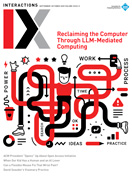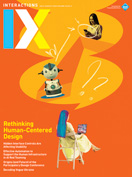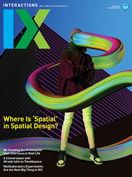Authors:
Bhautik Joshi
To understand AI and creativity, we need to first examine the relationship between technology and art. Creativity is vast, however, so this article will focus on film and touch on the very related impacts on design. Technology and art have traveled hand in hand for as long as we've had both. Tools for art-making dating back 100,000 years were discovered in South Africa [1]. Some argue that the desire to make art drove the human adoption of tools, and vice versa. Contemporary art history itself came from the scientific approach in the 15th century, when the study of tools…
You must be a member of SIGCHI, a subscriber to ACM's Digital Library, or an interactions subscriber to read the full text of this article.
GET ACCESS
Join ACM SIGCHIIn addition to all of the professional benefits of being a SIGCHI member, members get full access to interactions online content and receive the print version of the magazine bimonthly.
Subscribe to the ACM Digital Library
Get access to all interactions content online and the entire archive of ACM publications dating back to 1954. (Please check with your institution to see if it already has a subscription.)
Subscribe to interactions
Get full access to interactions online content and receive the print version of the magazine bimonthly.






